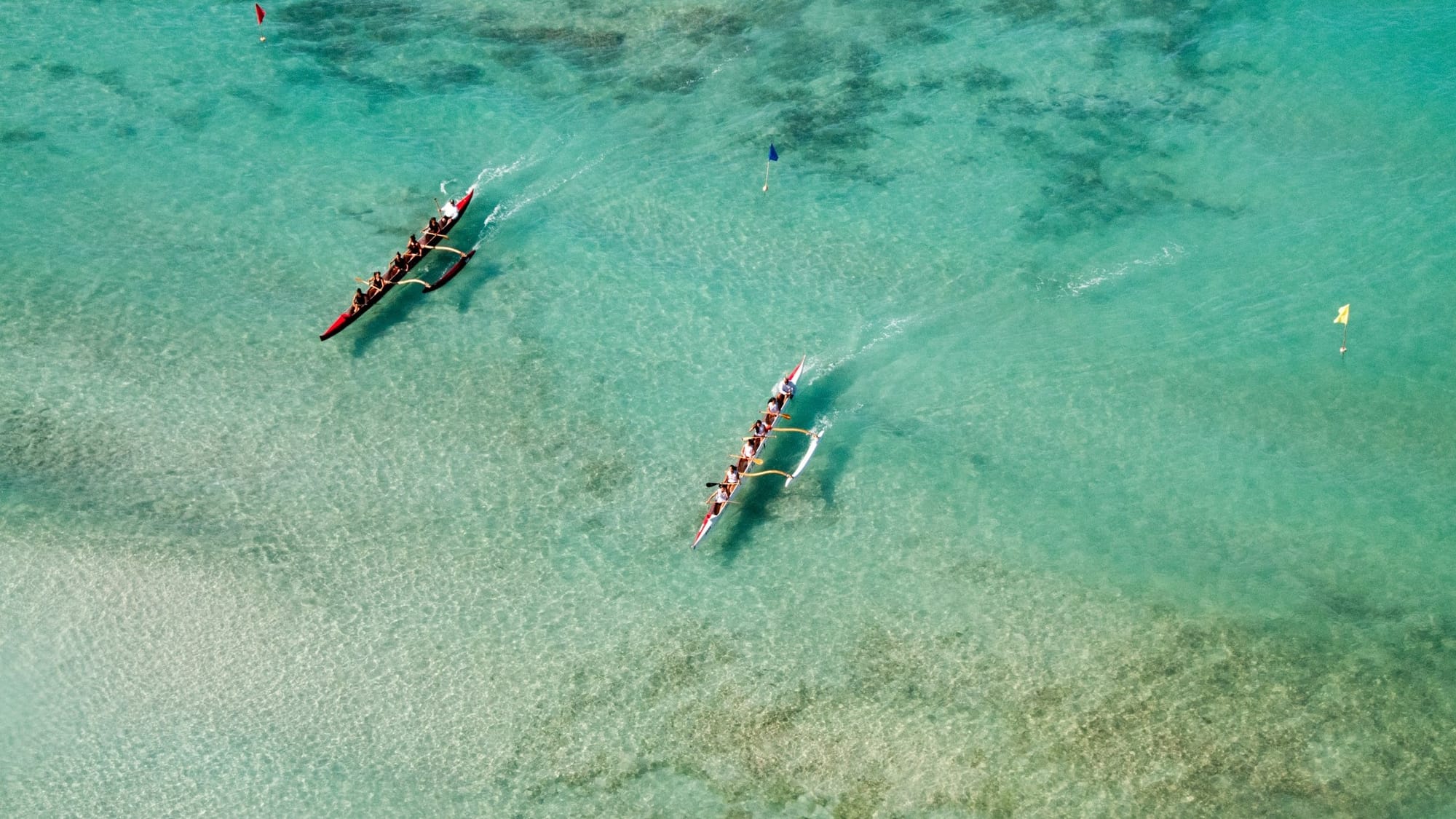Approaching Waves: Size and Shape Matter
When paddling an outrigger canoe, the ability to read and respond to waves is crucial for a safe and enjoyable experience.

When paddling an outrigger canoe, the ability to read and respond to waves is crucial for a safe and enjoyable experience.
Here's how to approach waves based on their size and shape.
- Small Waves (less than 2 feet)
- Approach: These waves generally pose little challenge. Paddle directly into them, maintaining a steady pace and keeping the canoe perpendicular to the wave.
- Technique: Use a smooth, powerful stroke to maintain momentum and avoid getting pushed back by the wave.
- Medium Waves (2-4 feet)
- Approach: For head-on waves, maintain a perpendicular approach, but adjust your stroke rate to match the wave's rhythm. For angled waves, consider adjusting your course slightly to take the wave at a more favorable angle.
- Technique: Utilize a more dynamic stroke, applying power as you rise on the wave and easing off as you descend. This helps maintain control and avoid burying the ama (outrigger float).
- Large Waves (over 4 feet)
- Approach: Assess the wave carefully before approaching. For breaking waves, it might be necessary to turn and ride the wave parallel to the shore. For large swells, consider paddling at an angle to avoid getting caught on the crest and potentially capsizing.
- Technique: Advanced skills like bracing and steering with the paddle are crucial for maintaining stability and control in large waves. Communicate effectively with your crew to coordinate efforts.
- Breaking Waves
- Approach: Breaking waves demand the most respect and caution. Assess the wave type and break zone. For plunging breakers, avoid paddling directly into the wave; instead, attempt to punch through the shoulder of the wave or ride parallel to the shore. For spilling breakers, maintain momentum and paddle directly into the wave to avoid getting caught and rolled.
- Technique: Timing is key. Paddle hard to gain speed before encountering the wave, then brace for impact and maintain a firm grip on the paddle. Be prepared to lean into the wave and use your body weight to maintain balance.
- Additional Tips
- Observe the Wave Pattern: Take some time to understand the wave frequency and sets before paddling out.
- Communicate with Your Crew: In multi-person canoes, clear communication is vital for coordinating efforts and ensuring everyone is prepared for approaching waves.
- Respect Your Limits: Don't overestimate your skills. If the waves seem beyond your comfort level, it's wise to stay ashore or seek guidance from experienced paddlers.
Remember, ocean conditions are constantly changing. Always be prepared to adapt your approach based on the size and shape of the waves to ensure a safe and successful paddling experience.

